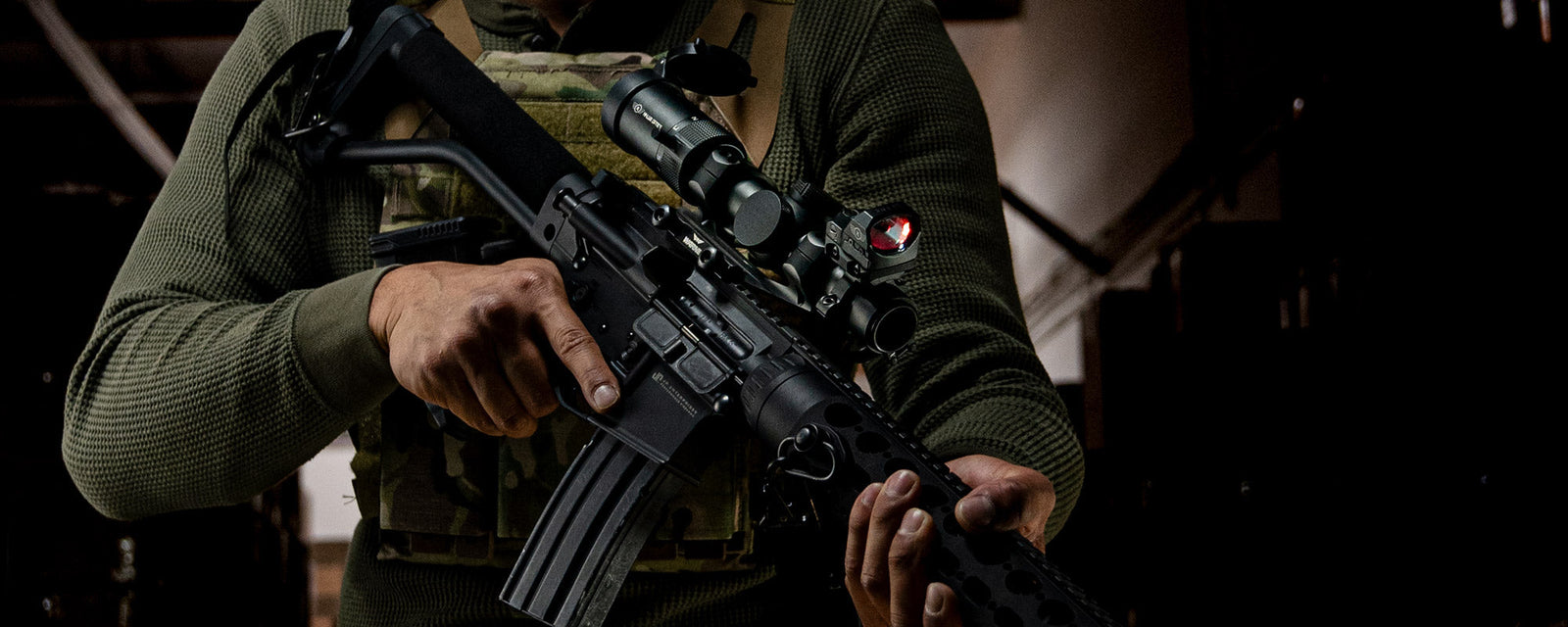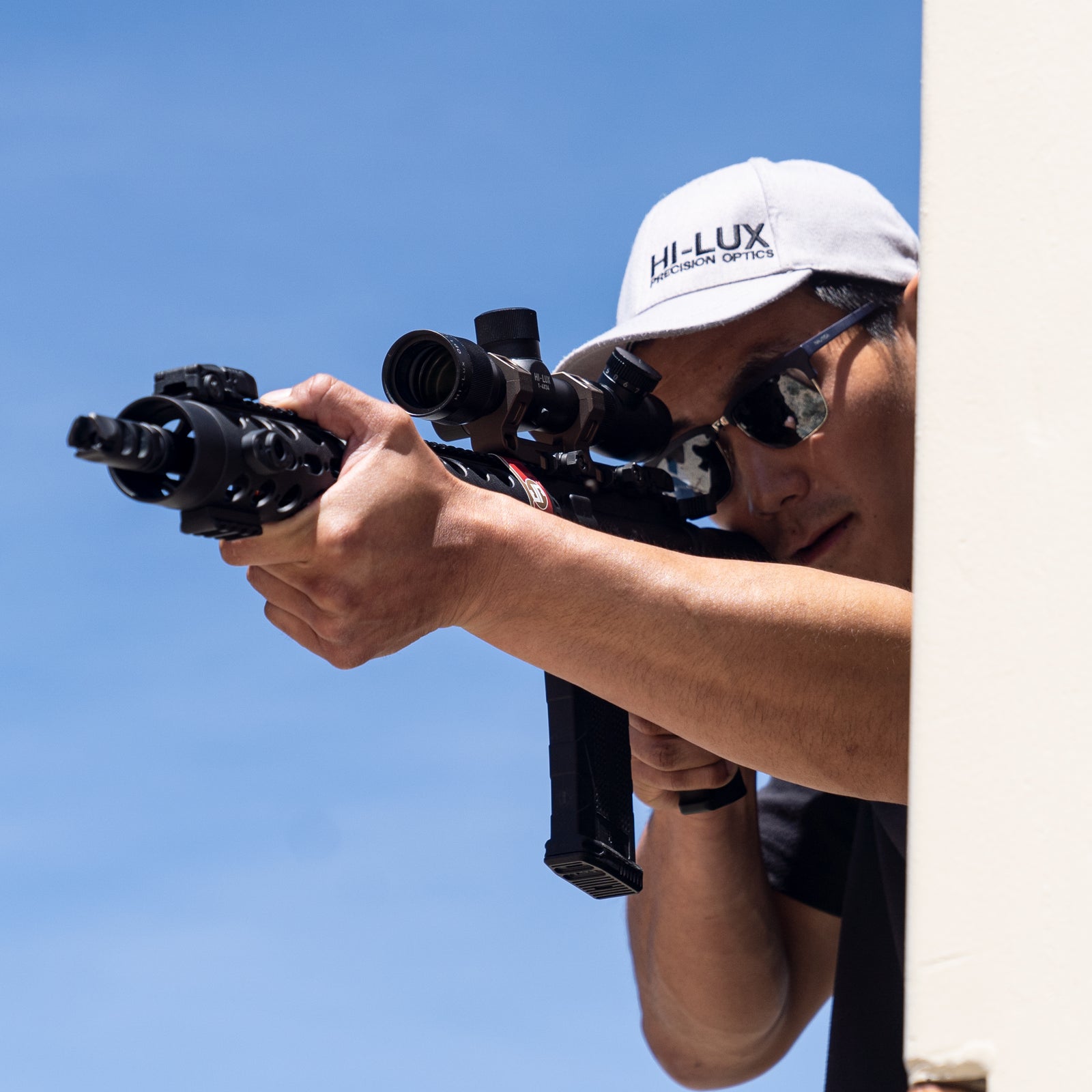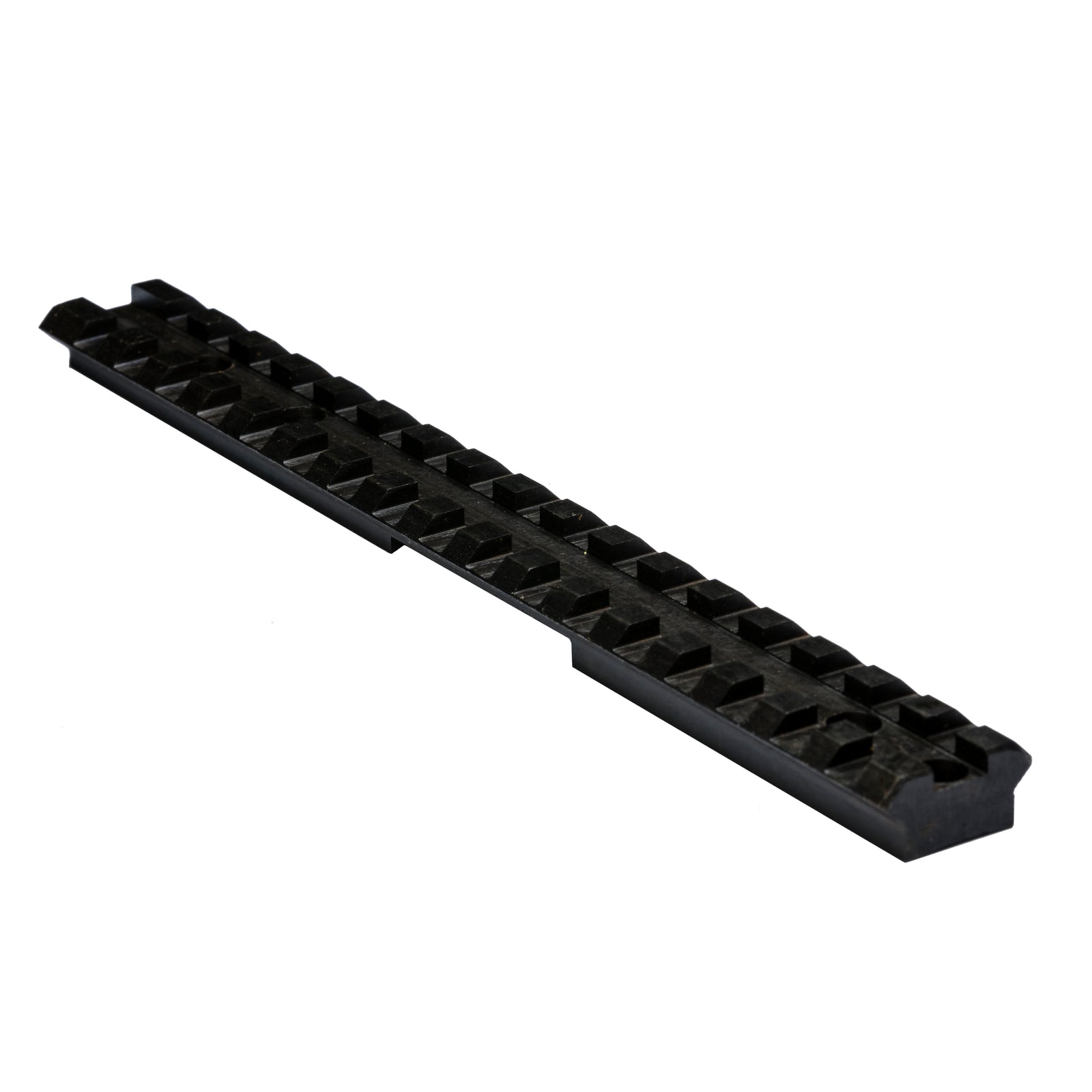Origin of the Army Sniper Program in Vietnam
There was very little development in the field of sniper rifles and telescopic sights post WWII to Vietnam. We take a deep dive and examine the major events that eventually led to development of the Army Sniper Program and standardized sniper equipment.
Post WWII - Korea
The period between Korea and Vietnam saw little advancement in sniper equipment or training other than the concepts and objectives formulated from the USAMTU “Trainfire” program.
Although training manuals were periodically amended, sniper training was not compulsory.
Snipers were perceived by the public to be “cowardly” and adjuncts of a type of warfare in the trenches. In 1942, British sniping instructor Lt Col Nevill Alexander Drummond Armstrong commented that “There appeared to be a tendency amongst [sic] Army musketry men to scorn the sniper – they held that sniping was only a “phenomenon" of trench warfare and would be unlikely to occur again.
The military viewpoint regarding sniper weapons of special configuration (other than standard issue) remained one of particular disdain, due to the difficulty in field supply and replacement of nonstandard parts.
Military Testing of Telescopic Sights (Korean War)
Service rifles at the time of the Korean War included the M1903A3 and M1903A4 Springfield rifles as well as the M1C and M1D Garands. These rifles used the Weaver 330C/M73B, Unertl 8X (Marine corps), Kollmorgen 4XD, Lyman M82 and Frankford Arsenal M84 scopes.

In 1952, Captain William Brophy set out to focus attention on the inadequacies of Army sniping equipment in Korea. Captain Brophy, an accomplished competitive shooter, visited several field units for the purpose of discussing sniping activities, tactical employment of snipers and required characteristics of sniping equipment.

Captain Brophy used a commercial Winchester Model 70 target rifle with a Unertl 10X 2” objective telescope in the field to demonstrate what the right combination of weapon and trained marksman could achieve in a combat environment. Brophy was met with reservation that “the equipment [he] was using would be easily damaged and could not be handled properly by the average soldier.”
In 1951, the Marine Corps Equipment Board at Quantico determined that “it is undesirable to inject another rifle into the supply system, and if another rifle is injected into the supply system, it is necessary to inject non-standard ammunition for this rifle in to the supply system in order to exploit fully any gain in accuracy.”
The first notable application of telescopic sights to the M14 took place in 1958, when LTC Frank Conway mounted commercial Weaver K-6 scopes on two M14’s with special bases.
Although these rifles were fired by Captain Richard Wentworth at the Running Deer World Championships with excellent results, the task of convincing higher echelons of command within the Army that a sniper system was necessary during peacetime was challenging.
Sniping During Early Days in Vietnam
When the Vietnam War escalated to the point at which full scale US invention became a reality, there was no standardized sniper equipment. Although military regulations prohibited bringing personal weapons to Southeast Asia, riflescopes were not included. Consequently, several sniping weapons were fielded under these circumstances.
These “riflemen with telescopes” used “improvised” equipment typically consisting of commercial hunting rifles and scopes.
Need for Standardized Sniper Equipment
As combat personnel were being “taken out” by VC and NVA snipers during the early days of Vietnam, a flurry of official and quasi-official efforts to field sniper weapons commenced.
At the time, the Army Weapons Command wanted to retain use of the M84 and M80 ball ammo.
In 1966, the Army Weapons Command (USA-WECOM) developed a hinged telescope mount to accommodate the M84 sight. On October 19, 1966, the United States Infantry Board (USAIB) was directed to test this mount with the M14 rifle for its suitability in Vietnam.
During the testing, the USAIB determined that the mount and the M84 telescope required more than an hour to mount and were prone to failure and breakage. Additionally, the 2.2X M84 provided marginal benefit for target acquisition in field conditions.
The USAIB concluded the following from testing:

Perhaps, the most significant aspect of USAIB evaluation was the suitability of a match-grade weapon and ammunition system for combat use. This would later spur the development of the XM-21, an accurized version of the M14.

In the interim, the Army decided that the M84 would be used as an interim item until a satisfactory variable ranging telescope could be adopted.
The M14 utilizes a bottom loading magazine and did not need to have the optic side mounted like the M1 Garand. In spite of having an added groove and screw recess on the receiver, the M14 did not have any mounts for the M84. With the support of M SGT Robert Walsh, an AMTU machinist, a special aluminum mount was fabricated to mount M84 scopes on the M14 rifles for the 11th Air Assault Division.
Shortly after, a similar mount using the Weaver long base was fabricated at Fort Benning for Army Weapons Command at Rock Island for evaluation. For added rigidity, this mount also attached to the clip-guide on the receiver.
Marine Sniper Equipment circa 1966
The US Marines and the US Army developed their sniper programs around the same time in South Vietnam.
Although the sniper weapon platforms for the Army and Marine Corps differed, both the Army and Marines relied heavily upon the guidance of their marksmanship training unit and competitive shooters.
Based on the current landscape of the Vietnam War, the Headquarters, United States Marine Corps (HQMC) decided that efficient sniping equipment would be essential in South Vietnam.
By the middle of 1965, the 3rd Marine Division had officially established their first sniper program in South Vietnam.
The first Marine Snipers teams used Winchester Model 70s with 8X Unertl telescopic sights built to Match grade specifications. On Oct 14, 1965, the USMC sniper team formed in Hue-Phu Bai TAOR had 2 confirmed kills on VietCong at a range of more than 700 yards in their first exercise.
By November 23, 1965, there were approximately 20 scout sniper teams of four men positioned throughout the III-MAF (Marine Amphibious Force) area.
III-MAF developed and modified techniques and tactics for employing small Marine units. The Marines experimented with specially trained and equipped sniper units.
The Marines eventually adopted the Remington 700 chambered in 7.62 NATO with heavy barrels (designed M40) and equipped the Redfield 3-9X40 scope. In spite of the adoption of the M40, a number of Model 70s and M1Ds remained in service in Vietnam for an extended period.
US Army Sniper Equipment circa 1966
Prior to 1965, Army sniping activities in Vietnam were conducted with almost entirely “improvised” equipment. Individual units responded by purchasing commercial Remington and Winchester sporting rifles and equipping them with telescopic sights.
According to a veteran Army instructor, “if you could get them off on the right foot, common sense and field experience usually turned a decent marksman into a good sniper.” There was no formal training syllabus or course of instruction.
Army personnel remarked that the greatest challenge associated with fielding Army snipers was the lack of proper equipment.
The ruggedness of the M14, on the other hand, had been proven.

Colonel Robert Bayard had considered the accurized M14 a prime requisite for the sniper platform, based on the results of evaluations conducted with all military and commercial rifles available in the US in combination with various ammunition and telescopes.
By the end of 1966, the main objective of the Army in regards to sniper training was to find a suitable telescopic sight for the M14. Although failure prone and fragile, the M84 sight was chosen as an interim optic while a more suitable telescopic sight was being developed.
The first shipment of authorized sniping equipment arrived in South Vietnam in March 1967. This accounted for 125 M84 equipped M14 rifles and 384 Colt/Realist scopes for the M16 rifles.
Even though there was an increase in available sniper rifles and telescopic sights, there was no protocol regarding the efficient use and deployment of snipers in Vietnam. There were no special measures designed to take advantage of the sniper’s specialized training and equipment.
Development of The ART Scope
In 1965 a young Jim Leatherwood was stationed at Fort Benning. At this time, Lieutenant Leatherwood was working on a concept of the ART scope using his patented Leatherwood principle.
Later that year, he met with the Limited Warfare Laboratory (LWL). Coincidentally, the Limited Warfare Laboratory was conducting its own research on weapon systems for the Army sniper program. Jim began working with LWL to refine the Leatherwood ART in to a system that would be rugged and reliable for combat.

In 1966, Jim was stationed in South Vietnam with the Big Red One (1st Infantry Division). He brought along with him the first operable version of the Automatic Ranging Telescope (ARTel). One day, the unit's Quonset huts were getting shot at by VC guerillas. In the midst of the chaos, Jim grabs his rifle and his ARTel prototype. A few hours later, he comes back and exclaims "they won't be a problem anymore."
There were a number of evaluations conducted by diverse organizations in the mid 1960s to determine a suitable telescope for Army Sniper use. The Adjustable Ranging Telescope (ART) fielded by the US Army Limited Warfare Laboratory met the necessary requirements.

The ART in conjunction with USAMTU accurized M14s firing M118 Match ammo produced a combination capable of consistent first round hits.

A number of the original “tool-room” versions of the ART were sent to Southeast Asia for combat evaluation under the supervision of the Army Concept Team in Vietnam (ACTIV).
Turning Point for Sniper Operations in Vietnam
In 1967, the Army Concept Team in Vietnam (ACTIV) conducted evaluations of the Army sniper operations and equipment in Vietnam.
These evaluations included pertinent information on the current state of sniping in Vietnam and equipment employed by the various units.
Prior to ACTIV’s involvement, the effect of the AMTU match conditioned M14s had seen inconclusive results. These rifles were tested by various units in the hands of both experienced and inexperienced marksman in a varying conditions and scenarios.
ACTIV on the other hand had focused its attention on the AMTU match conditioned M14 rifle and the Auto Ranging Telescope (Leatherwood ARTel).

ACTIV fielded 10 match grade M14 rifles with ARTel prototypes straight from the tool-room. They took the weapon system and introduced various commands to its effectiveness and benefits.
Experts believe that this action was indirectly responsible for Major General Julian Ewell’s requesting the USAMTU’s assistance for training and equipping 9th Infantry Division snipers. The 9th operated in the Mekong Delta and General Ewell envisioned an effective utilization of snipers as the region was relatively flat.

In response, a sniper instruction team comprised of 8 NCOs, a national Match armorer and its commander MAJ Willis Powell arrived in Vietnam in June 1968.
The team setup a sniper training facility from scratch. The AMTU served as snipers in order to gain practical experience in actual combat situations. During the first month, the team “bagged” ten VC in a night ambush engaging at 500m.
A few riflemen functioning as snipers with units of the 1st and 9th Infantry divisions recorded a number of first round hits out to 600m with the ART. Prior to this, these same marksmen had rarely engaged targets beyond 400m with their M84 equipped M14s or M16s mounting 3X Colt Realist scopes.
The successful field use of AMTU accurized M14s in conjunction with the Leatherwood ARTel led to the official acceptance of the rifle and sight as the XM21 Sniper Weapon System.

The combination of the XM21 along with the sniper training and field craft tactics developed for the 9th Infantry Division and success culminated in the 9th Infantry Division Sniper Program at Fort Benning.

Sources
There were many sources used to compile this data. We highly recommend Peter Senich's The Long-Range War : Sniping In Vietnam and Complete Book of U.S. Sniping. In addition, we have cross referenced several blog posts and the National Archives for historical documents and information. You can find our list of sources below.
Websites:
https://www.snipercentral.com/us-army-m21-xm21
https://nationalinterest.org/blog/buzz/how-sniper-came-age-during-world-war-ii-36367
https://apps.dtic.mil/dtic/tr/fulltext/u2/a185226.pdf
https://warfarehistorynetwork.com/2016/09/06/caught-in-the-crosshairs-snipers-in-wwii/
http://www.nramuseum.org/media/940657/sniper%20garands.pdf





Curtis
May 08, 2024
I had an ART on my Remington .308
Tack driver.
Will have another soon.
The only easy shoot scope you you need to shoot and scute